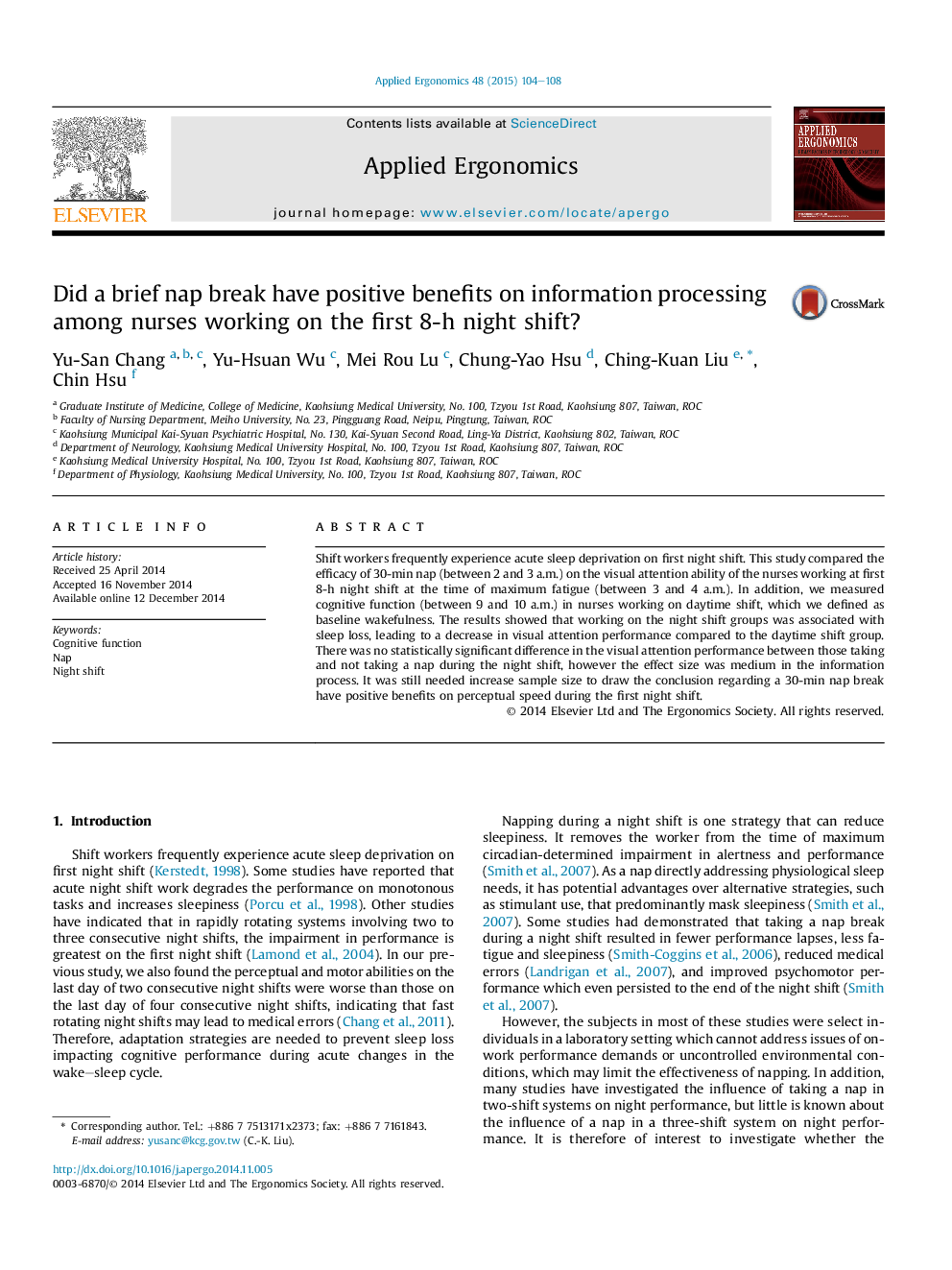| Article ID | Journal | Published Year | Pages | File Type |
|---|---|---|---|---|
| 550031 | Applied Ergonomics | 2015 | 5 Pages |
•Shift workers frequently experience acute sleep deprivation on first night shift.•We investigated impact of a nap on the visual attention ability on first night shift.•There were no differences between those taking and not taking a nap.•The effect size was medium in the information process between groups.•Need increase sample size to draw the conclusion regarding the benefits of nap.
Shift workers frequently experience acute sleep deprivation on first night shift. This study compared the efficacy of 30-min nap (between 2 and 3 a.m.) on the visual attention ability of the nurses working at first 8-h night shift at the time of maximum fatigue (between 3 and 4 a.m.). In addition, we measured cognitive function (between 9 and 10 a.m.) in nurses working on daytime shift, which we defined as baseline wakefulness. The results showed that working on the night shift groups was associated with sleep loss, leading to a decrease in visual attention performance compared to the daytime shift group. There was no statistically significant difference in the visual attention performance between those taking and not taking a nap during the night shift, however the effect size was medium in the information process. It was still needed increase sample size to draw the conclusion regarding a 30-min nap break have positive benefits on perceptual speed during the first night shift.
